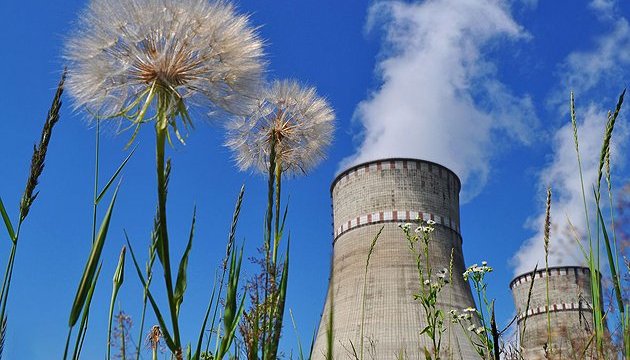UDC 556.3+556.5(477.411):550.4:502.51 • Issue 7 (35) / 2022 • 61-64 pages
T. Koshliakova, O. Koshliakov, I. Shvaika
Koshliakova T., PhD (Geol.), Senior Research Associate, M.P. Semenenko Institute of Geochemistry, Mineralogy and Ore Formation of NAS of Ukraine, ORCID 0000-0001-8551-3531, tatianakoshliakova@gmail.com
Koshliakov O., D. Sc. (Geol.), Head of the Department, Institute of Geology of Taras Shevchenko National University of Kyiv, ORCID 0000-0003-3090-4855, kosh57@ukr.net
Shvaika I., PhD (Geol.), Junior Research Associate, M.P. Semenenko Institute of Geochemistry, Mineralogy and Ore Formation of NAS of Ukraine, ORCID 0000-0002-1908-6639, I.Shvaika@nas.gov.ua
Abstract
Investigation presented is devoted to the problem of ecological and geochemical assessing of surface and near-surface waters of Kyiv (on the example of Sunny Lake, Lower Telbin Lake and shallow groundwater of Vodnykiv Island). As part of an ongoing assessment of the ecological-hygienic and medico-biological state of Kyiv, a set of surface water and shallow groundwater samples was collected and analysed (ICP-MS) for major and trace-element concentrations. Surface-water samples included two lakes that are popular recreation sites. Although all waters had near-neutral pH, concentrations of several trace elements were found to be above the maximum permissible concentrations (MPC) in Sunny Lake (Sb to 63 mg/dm3, Mn to mg/dm3) and Lower Telbin Lake (Al to 4,0 mg/dm3, Fe to 1,4 mg/dm3, As to 50 mg/dm3). Shallow groundwater samples had highly elevated concentrations of Fe (to 16,3 mg/dm3) and Mn (to 2,6 mg/dm3), as well as dissolved organic acids (to 25 mg/dm3). Two primary controls were established to explain the observed peculiarities in water quality: 1) water residence time coupled with the underlying geology; and 2) proximity to industrial effluent, including incineration and wastewater treatment facilities. In addition, lake-bed sediment was locally contaminated (e.g., lead up to 100 times the MPC). Preliminary data on the metal content of aquatic vegetation suggests a potential threat to human health and the environment. As a whole, our data show that the sampled water bodies fail to meet minimum requirements for category II (cultural, household, recreational) use. Although other water bodies in the area meet category II standards, continued loading of bio-organic and man-made inorganic pollutants may degrade water quality in the future. This situation can only be avoided by the introduction of scientifically sound and administratively supported reclamation measures which are at the moment slowly implementing in Ukraine.
Key words: ecological and geochemical assessing, surface water, shallow groundwater, trace-element analysis, man-made contamination
Article
Reference
1. Akimova, O.R., Kuraieva, I.V., Samchuk, A.I. (2011), Features of distribution of chemical components in natural reservoirs of Kyiv, Geochemistry and ore formation, 29: 94–98.
2. Dyniak, O.V., Koshliakova, T.O., Koshliakova, I.Ye., Koshliakov, O.Ye. (2021), Spatial analysis and modeling of tritium content in groundwater of Senoman-Callovian aquatic complex on the territory of Kyiv for the purpose of assessing changes in its ecological condition in time, Abstracts of XV International Scientific Conference «Monitoring of Geological Processes and Ecological Condition of the Environment». https://doi.org/10.3997/2214-4609.20215K2055.
3. Koshliakova, T.O., Dolin, V.V. (2016), Natural and man-caused factors of Cenomanian-Callovian groundwater complex chemical composition formation within urban agglomeration of Kyiv, Visnyk Taras Shevchenko National University of Kyiv: Geology, 4(75): 73–76.
4. Koshliakova, T.O., Koshliakov, O.Ye., Dyniak, O.V., Koshliakova, I.Ye. (2021), Tritium content as indicator of Cenomanian-Callovian groundwater complex state changes as a result of long-term operation within Kyiv, Abstracts of XXth International Conference «Geoinformatics: Theoretical and Applied Aspects». https://doi.org/10.3997/2214-4609.20215521053.
5. Kuraieva, I.V., Koshliakova, T.O., Zlobina, K.S. (2020), Peculiarities of Pb, Mo, Cu and Zn distribution in water of artesian aquifers (within Kyiv deposit), Mineralogical Journal, 42(2): 63–73. https://doi.org/10.15407/mineraljournal.42.02.063.
6. Prokopuk, M.S., Pohorielova, Yu.V. (2017), Seasonal dynamics of biogenious substances in reservoirs of Kyiv, Visnyk of Zaporizhzhia National University, 1: 161–169.
7. Shevchenko, O.A., Bezotosnyi, V.M. (2017), Ecological laboratory researches with examination of water objects, soil and condition of atmospheric air on the territory of Darnytskyi district of Kyiv. (Scientific report), Dnipropetrovsk Medical Academy of the Ministry of Health of Ukraine, Dnipro.
